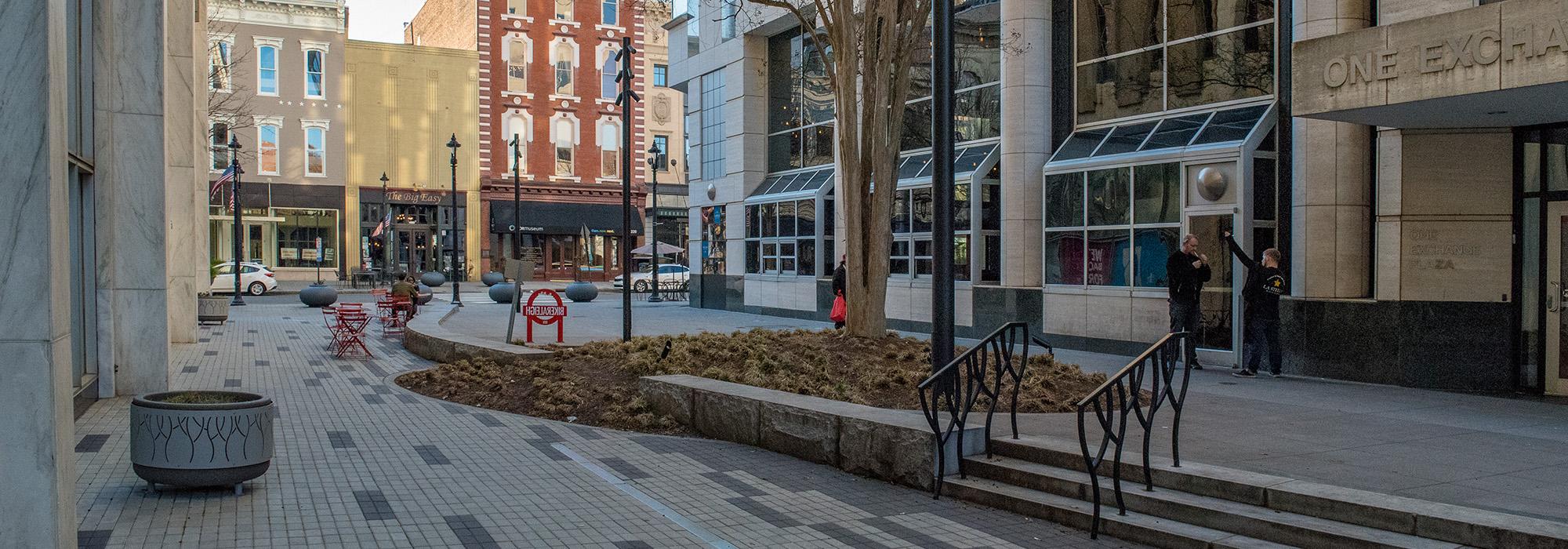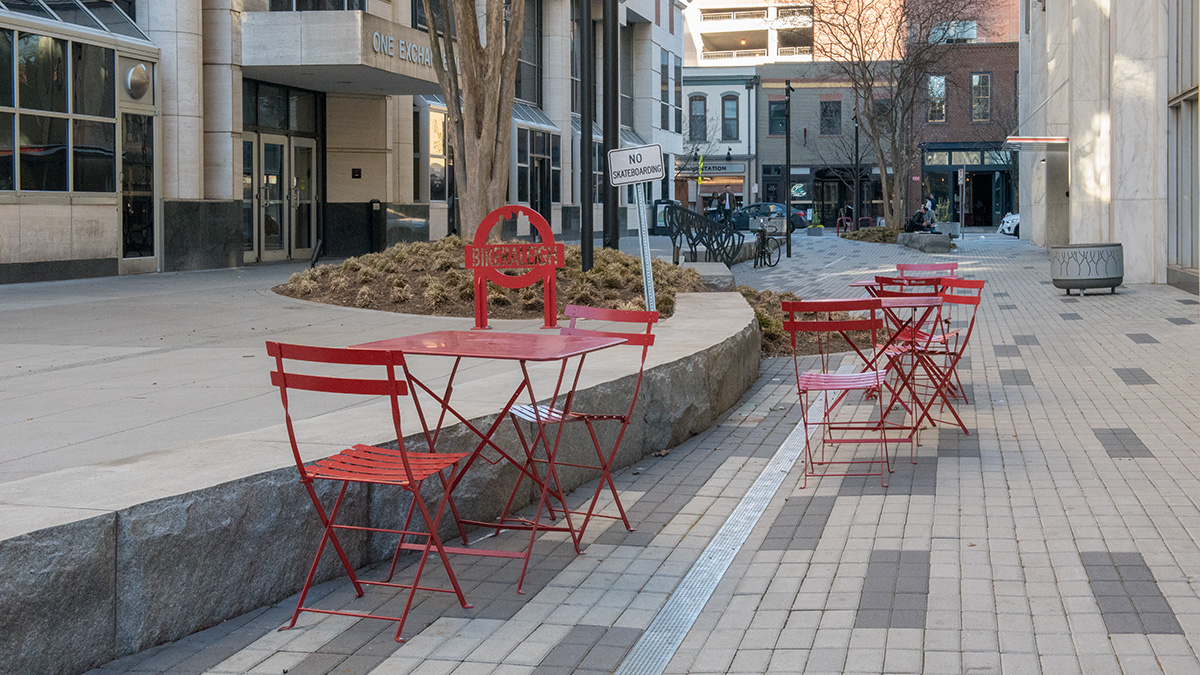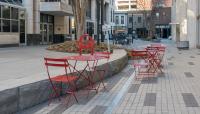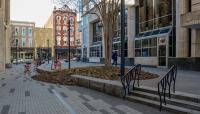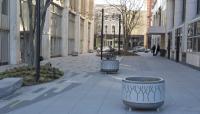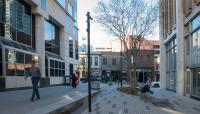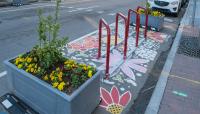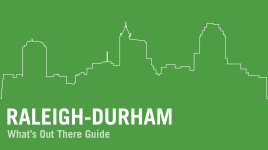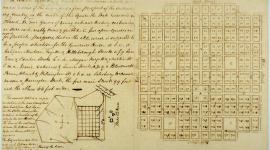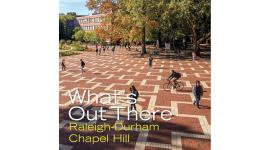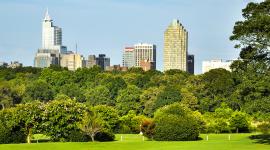Landscape Information
In 1965 Richard Bell designed two narrow plazas replacing parallel side streets in downtown Raleigh, running across the city block bounded by Fayetteville, Hargett, Wilmington, and Martin Streets. Exchange Plaza featured an ornamental fountain accompanied by low planters with trees, shrubs, and perennials, and pebbled paving, later replaced with red brick pavers. Bell implemented a similar treatment for Market Street, to the south. Elements of his design survived there until 2015, including a central row of granite planters and granite chips embedded in the pavement—a nod to the black granite façade of the Brutalist North Carolina National Bank building along the plaza’s southern edge.
The plazas were redesigned in 2015-2016, following revitalization projects at both their ends: the reopening of Fayetteville Street to traffic and the renovation of the Moore Square Transit Station. Although distinct spaces, the plazas connect at Fayetteville Street and were designed as a cohesive whole. Landscape architecture firm Surface 678 repaved the plazas and removed existing plant materials to increase the walkable space fivefold. In Exchange Plaza, a curved stone seating wall (the space’s central spine) is interrupted by two small grass berms with crape myrtles; in Market Plaza, a steel-framed, glass-canopy shelter accommodates pop-up retail, while five grass strips, each planted with a single tree, form an asymmetrical pattern along the northern side. Raleigh artists Matt McConnell and David McConnell created planters and railings evoking tree branches in Exchange Plaza, and a gold-tinted aluminum-frame video screen affixed to the First Citizens Bank building facing Market Plaza. Exchange Plaza was a contributing feature to the Fayetteville Street Historic District, listed in the National Register of Historic Places in 2008.



